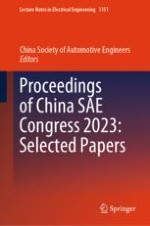
2024 | OriginalPaper | Chapter
An Improved GA-Based Method for Generating Critical Collision Scenarios of AEB on Longitudinal Slope
Authors : Man Zhang, Siyuan He, Jize Wen, Wendong Cheng
Published in: Proceedings of China SAE Congress 2023: Selected Papers
Publisher: Springer Nature Singapore
Activate our intelligent search to find suitable subject content or patents.
Select sections of text to find matching patents with Artificial Intelligence. powered by
Select sections of text to find additional relevant content using AI-assisted search. powered by